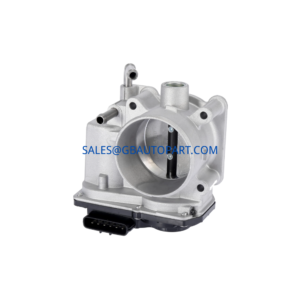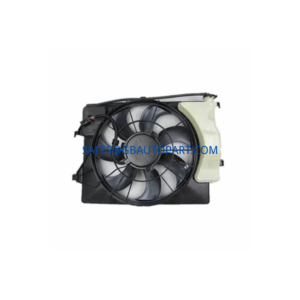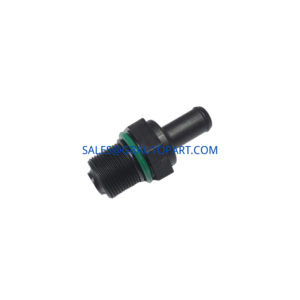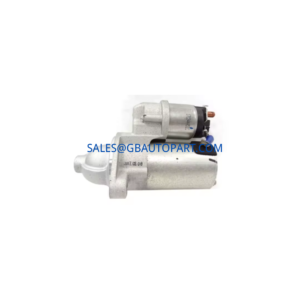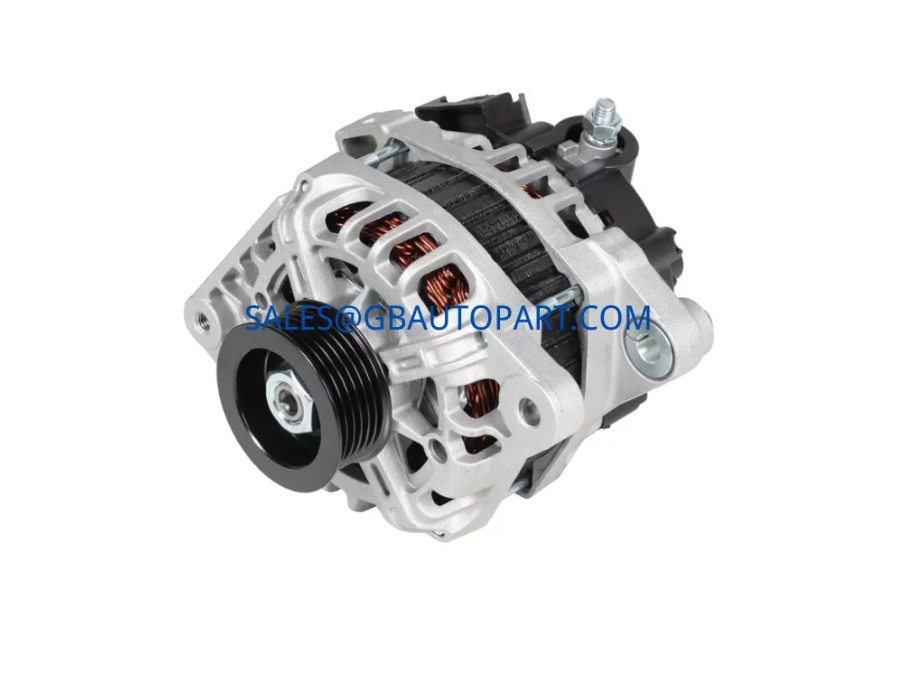
The modern automobile is a symphony of mechanical and electrical systems, and at the heart of its electrical power lies the alternator. This vital component ensures a car’s battery remains charged and its many electrical systems—from the headlights to the infotainment screen—have a steady supply of power while the engine is running. For owners of Hyundai and Kia vehicles, one specific part number stands out for its reliability and precision: the 37300-03815 alternator. This article delves deep into what makes this particular alternator an indispensable component for a wide range of popular models and why understanding its function and maintenance is crucial for vehicle longevity.
Understanding the Alternator: The Powerhouse of Your Vehicle
Before we focus on the specific part, it’s important to appreciate the alternator’s fundamental role. Functioning as a mini-power plant, the alternator converts the mechanical energy from the engine’s rotating crankshaft into electrical energy. It accomplishes this through a system of belts, pulleys, and intricate internal components. The crankshaft spins the alternator’s pulley, which in turn rotates a magnetic rotor inside a coil of wire (the stator). This rotation generates an alternating current (AC), which the alternator’s internal diode rectifier then converts into direct current (DC) that the car’s electrical systems can use.
The alternator’s two primary functions are straightforward yet critical:
- Charging the Battery: It replenishes the battery’s charge after the engine starts, keeping it ready for the next ignition cycle. Without the alternator, the battery would quickly drain from powering the car’s electronics, leaving you stranded.
- Powering Electrical Components: It supplies electricity to all the car’s accessories, including the headlights, wipers, power windows, radio, air conditioning, and a multitude of onboard computers and sensors. The alternator essentially takes over the job of powering the car’s electrical load once the engine is running.
A healthy alternator is the foundation of a reliable electrical system. If it fails, the domino effect is swift and severe. Electrical components will begin to malfunction, the battery will eventually die, and the vehicle will grind to a halt.
Decoding the 37300-03815 Alternator

The 37300-03815 is not just any alternator; it is a meticulously engineered component designed to meet the specific power requirements of certain Hyundai and Kia models. Its design and specifications are a direct result of extensive research and development to ensure optimal performance and seamless integration with the vehicle’s electrical architecture. This part number is a mark of quality and compatibility, signifying a component that aligns perfectly with the original equipment manufacturer (OEM) standards.
What makes this particular part so effective is its precise specifications. It is a 12-volt, 150-amp alternator, a power output rating that provides ample current for the vehicles it serves. This high amperage is essential to handle the growing electrical demands of modern vehicles, which are equipped with more sophisticated electronics and comfort features than ever before. For a Hyundai or Kia with a standard battery, the 150-amp output ensures the battery is consistently charged while powering all accessories without strain.
The 37300-03815 is known for its durability and efficient heat dissipation. Alternators generate a significant amount of heat during operation, and if not managed properly, this can lead to premature failure. The design of this specific alternator includes features that help regulate temperature, ensuring it maintains stable performance even under heavy loads or in hot climates.
This alternator is found in a variety of popular Hyundai and Kia models, including but not limited to specific years of the Hyundai Sonata, Santa Fe, and Tucson, as well as the Kia Optima and Sorento. Its widespread application across these models underscores its versatility and the trust that manufacturers place in its design. The internal voltage regulator, which is a key component, works to maintain a stable output voltage, preventing power surges or drops that could harm sensitive electronic control units (ECUs) and other onboard systems. The pulley, which connects to the serpentine belt, is also designed with exact OEM dimensions to ensure a perfect fit and proper belt tension, a critical factor for long-term reliability.
Spotting the Signs of a Failing Alternator
A failing alternator rarely gives up without a fight. Drivers who are attuned to their vehicle’s behavior can often detect the early warning signs of a failing 37300-03815 alternator, allowing for a timely replacement that prevents more extensive damage. Recognizing these symptoms is the first step toward a proactive solution.
One of the most common indicators is a flickering or dimming of the headlights and interior lights. This happens because the alternator is no longer supplying a consistent voltage to the electrical system. As the engine RPM changes, the output voltage fluctuates, causing the lights to dim at idle and brighten when you accelerate.
The most direct and unavoidable sign is the illumination of the battery warning light on the dashboard. This light typically indicates an issue with the vehicle’s charging system, and while it’s often called the “battery light,” it frequently points to a problem with the alternator itself. This light should never be ignored, as it signifies that your car is running on borrowed time, using only the remaining charge in the battery.
Unusual noises emanating from the engine bay can also point to a problem with the alternator. A bad bearing can produce a grinding or whining noise, especially when the engine is running. Furthermore, a loose or misaligned serpentine belt can cause a squealing sound. In both cases, these noises suggest a mechanical issue that compromises the alternator’s ability to function correctly. Finally, a dead battery is the most obvious and critical symptom. If you find your car won’t start and a battery check confirms it’s fully drained, but you know the battery is relatively new, a faulty alternator is likely the culprit.
The Value of a Quality Replacement
When the time comes to replace a failing alternator, the choice of a replacement part is paramount. Opting for a quality replacement is not merely a matter of getting your car running again; it is an investment in your vehicle’s long-term health and reliability. A cheap, low-quality alternator, often sourced from unknown manufacturers, may seem like a bargain initially but can lead to a host of problems. These parts often use inferior materials and lack the precise engineering required to work in harmony with the vehicle’s complex electrical system. They may fail prematurely, leaving you stranded and leading to additional repair costs.
A high-quality replacement, whether it is an OEM part or a reputable aftermarket alternative, is designed to meet or exceed the original manufacturer’s standards. It will deliver the correct voltage and amperage, ensuring all your electrical components operate as intended. The internal components, such as the rectifier and voltage regulator, are built to last, providing consistent and stable performance. When you purchase a quality 37300-03815 alternator, you are buying peace of mind. You are confident that your vehicle’s charging system is robust and reliable, capable of withstanding the rigors of daily driving. Furthermore, quality parts often come with a warranty, providing an additional layer of protection against defects and premature failure.
A quality replacement also protects other expensive components. An alternator that provides an unstable voltage can stress the battery, causing it to fail sooner. It can also send power surges to the engine control unit (ECU) and other sensitive electronics, leading to costly damage. By choosing a part that fits and functions correctly, you protect your entire vehicle from a cascade of potential issues.
Installation and Maintenance
While the alternator is a durable component, its longevity can be influenced by proper maintenance and installation. The installation process for an alternator can be complex, involving the removal of multiple belts and the disconnection of various electrical wires. It is a job best left to a professional mechanic who has the right tools and expertise. An incorrect installation can lead to a misaligned belt, which causes premature wear, or improper electrical connections, which can be a fire hazard.
For maintenance, there are a few simple checks you can perform to ensure your alternator and the surrounding systems are in good shape. Periodically inspect the serpentine belt for signs of cracking, fraying, or wear. The belt’s tension should be firm but not overly tight. You should also check the alternator’s electrical connections to ensure they are clean and free of corrosion. A build-up of dirt or corrosion can impede the flow of electricity, reducing the alternator’s efficiency. By performing these simple visual checks, you can help prolong the life of your alternator and your vehicle’s electrical system.
In conclusion, the 37300-03815 alternator is more than just a replacement part; it is a cornerstone of your Hyundai or Kia’s operational health. Understanding its importance, recognizing the signs of failure, and committing to a quality replacement are essential steps for any vehicle owner. By prioritizing a quality component, you ensure a safe and reliable driving experience for years to come.
FAQ
- How long does a 37300-03815 alternator typically last? A high-quality alternator, like the 37300-03815, can last anywhere from 8 to 15 years or between 100,000 to 150,000 miles. However, this can vary based on driving conditions, climate, and the electrical load placed on the system.
- Can I drive my car with a bad alternator? It is not recommended. Once the alternator fails, your car will run solely on battery power. The car will eventually stop once the battery drains, which could happen in the middle of traffic.
- Is it better to buy a new or a remanufactured alternator? Remanufactured alternators can be a good, more affordable option, but it’s crucial to buy from a reputable supplier who guarantees the quality of their rebuilding process. A new alternator offers the assurance of a fresh start with new components.
- How do I tell if my battery or alternator is the problem? A simple way to test this is to jump-start the car. If the car starts and then quickly dies after disconnecting the jumper cables, the alternator is likely the issue. If the car starts and continues to run, the battery may have been the problem. You can also have the battery and alternator tested at an auto parts store for free.



